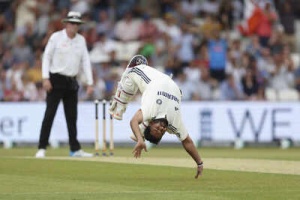Wimbledon, established in 1877, stands as the oldest and arguably the most prestigious tennis tournament in the world. Integral to its identity is the stringent dress code, mandating that all clothing be predominantly white, save for a mere 10mm trim of color.
The tradition of wearing all white at Wimbledon traces back to the 1870s, during the Victorian era. The rationale behind this sartorial choice was rooted in social decorum: visible perspiration was deemed unseemly.
Initially, the all-white rule served the practical purpose of masking sweat marks and ensuring players remained cooler during summer matches. Over the years, however, it has evolved into a defining characteristic of Wimbledon's rich tradition and history. While generally inflexible, the regulations have undergone occasional revisions.
Several influential figures in tennis, including Billie Jean King, Judy Murray, and Heather Watson, have voiced concerns regarding the discomfort experienced by menstruating players due to the requirement of wearing white undershorts. Responding to these concerns, the All England Club updated its policy in 2023, permitting players to wear dark-colored undershorts, provided they remain concealed beneath the shorts or skirt.
Controversies surrounding the Wimbledon dress code are not unprecedented. In 1949, Gertrude Moran faced criticism for exposing visible undergarments. Andre Agassi, renowned for his unconventional tennis attire, famously boycotted Wimbledon throughout the 1980s in protest of the all-white dress code.
Tennis icon Roger Federer caused a stir in 2013 when he sported white shoes featuring orange soles.
Wimbledon officials promptly requested that he refrain from wearing the shoes, prompting Federer to label the rules as "too strict."
More recently, during a rain delay in 2017, Venus Williams was instructed to change her attire due to the visibility of her fuchsia bra straps.
In 2023, Wimbledon relaxed its restrictions, allowing women to wear darker shorts beneath their skirts following concerns raised by several players regarding the requirement of wearing white shorts during their menstrual cycles.
In an official statement, the AELTC affirmed, "Prioritizing women's health and supporting players based on their individual needs is very important to us, and we are in discussions with the WTA, with manufacturers, and with the medical teams about the ways in which we can do that."
Newer articles
Older articles
 Android Security Alert: Government Warns of Critical Flaws Exposing User Data
Android Security Alert: Government Warns of Critical Flaws Exposing User Data
 Bezos-Backed Methane-Tracking Satellite Mission Ends Prematurely After Loss of Contact
Bezos-Backed Methane-Tracking Satellite Mission Ends Prematurely After Loss of Contact
 Sanjog Gupta Named ICC's New Chief Executive Officer, Set to Lead Cricket's Global Expansion
Sanjog Gupta Named ICC's New Chief Executive Officer, Set to Lead Cricket's Global Expansion
 Greg Chappell: Rishabh Pant is Revolutionizing Cricket with Unorthodox Batting
Greg Chappell: Rishabh Pant is Revolutionizing Cricket with Unorthodox Batting
 Heart Attack Warning: 5 Subtle Signs to Watch for a Month Prior
Heart Attack Warning: 5 Subtle Signs to Watch for a Month Prior
 Staying Hydrated May Significantly Lower Risk of Heart Failure, New Study Finds
Staying Hydrated May Significantly Lower Risk of Heart Failure, New Study Finds
 Asia Cup 2025: ACC Eyes September Start Date Amid Growing Optimism
Asia Cup 2025: ACC Eyes September Start Date Amid Growing Optimism
 FIFA Club World Cup 2025: Upsets, Messi Magic, and Weather Woes Define Group Stage
FIFA Club World Cup 2025: Upsets, Messi Magic, and Weather Woes Define Group Stage
 Gavaskar Calls for Kuldeep Yadav's Inclusion in Second Test Amid Bumrah Fitness Concerns, Eyes Batting Reshuffle
Gavaskar Calls for Kuldeep Yadav's Inclusion in Second Test Amid Bumrah Fitness Concerns, Eyes Batting Reshuffle
 Doctor Reacts to Rishabh Pant's Somersault After Century: 'Unnecessary!' – Surgeon Who Aided Recovery Speaks Out
Doctor Reacts to Rishabh Pant's Somersault After Century: 'Unnecessary!' – Surgeon Who Aided Recovery Speaks Out